This is an old revision of the document!
Table of Contents
Tires
mountain bike, noun : An all-terrain bicycle with wide knobby tires, straight handlebars, and typically 18 to 21 gears. Webster's Dictionary, mirriam-webster.com
Fat, knobby tires define a mountain bike. They are perhaps the most important single component to a mountain bike's handling yet are often neglected, maybe because of their non-durable nature or low relative expense. So much print is spent reviewing expensive frames and components - but where are the articles or books devoted to bike tires? 1)
Schwinn was the first to promote “balloon tires” on bikes in 1933 and they proved so successful that within two years, a full 97% of all bicycles sold used Schwinn Balloon tires 2).
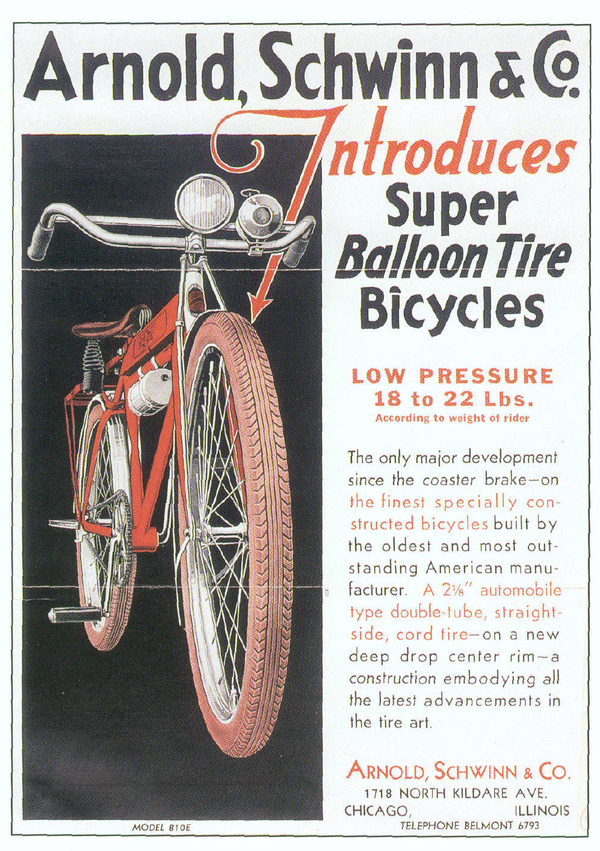
1933 Schwinn Balloon Tire, 26” x 2 1/8“
thecabe
Fast forward to Marin, 1976...
Cheap and available cruiser and BMX tires were sourced for early mountain bike and klunker tires. Their popularity pushed most early mountain bikes to be designed around 26” rims using 2 1/4“ balloon tires. The first mountain bike tires were either the Uniroyal Nobby, which weighed 1344 grams each or the nearly identical Carlisle Stud, both at 26” x 2 1/4“. In 1980, the new Cycle Pro Snakebelly dropped about a pound per tire with their light weight 26” tires and by 1981 the Mitsuboshi Skinwall, at about 896g each3) became the new standard.
Everything changed when the Snakebelly tire, the first lightweight fat tire, and the first wide aluminum rim made by Ukai became available. Now it was possible to build an awesome mountain bike! I started building CCPROTO in 1978, designing every part from the ground up for minimum weight and maximum performance4). Charlie Cunningham, from Jacqui Phelan's blog
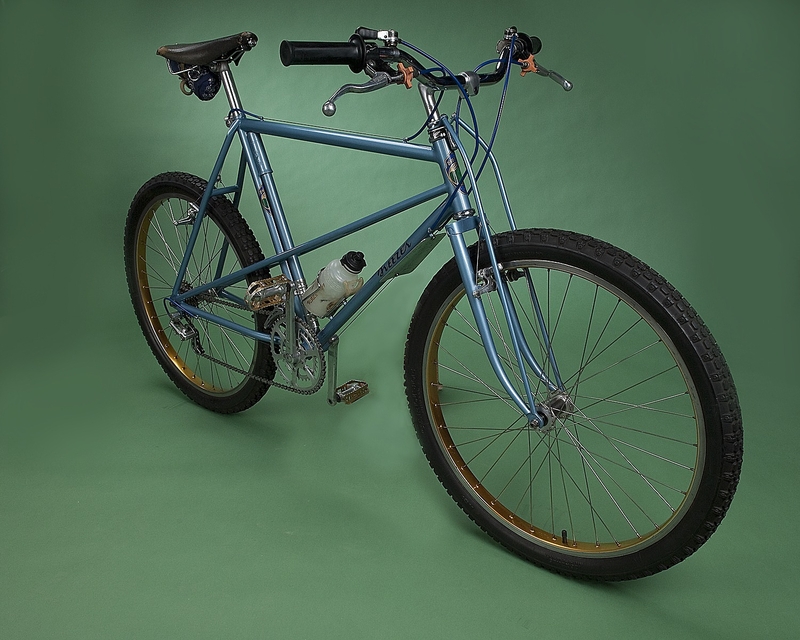
Uniroyal Nobby tires, on a 1977 Breezer JBX1
Smithsonian
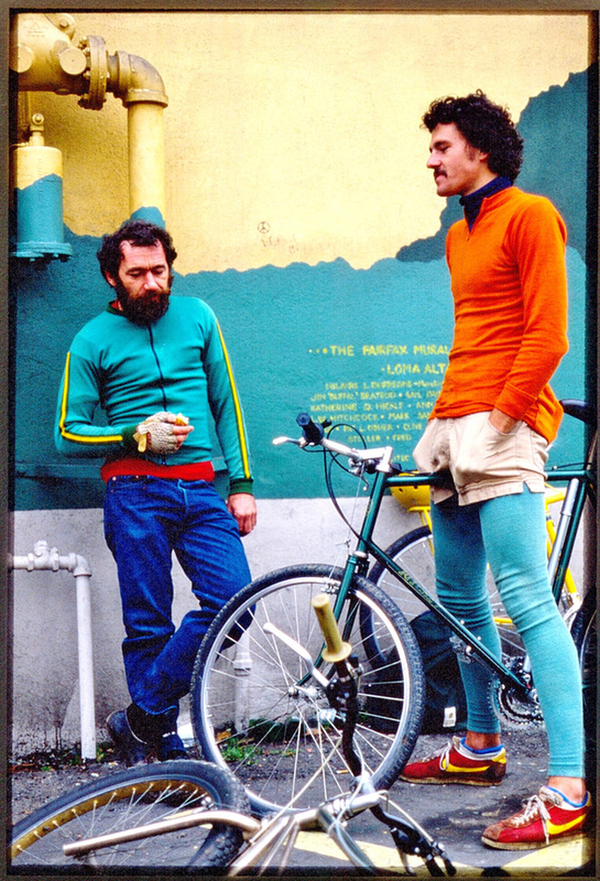
650b Nokia Hakkapeliitta tires on a 1978 Ritchey 650B
Vintage Mountain Bike Workshop
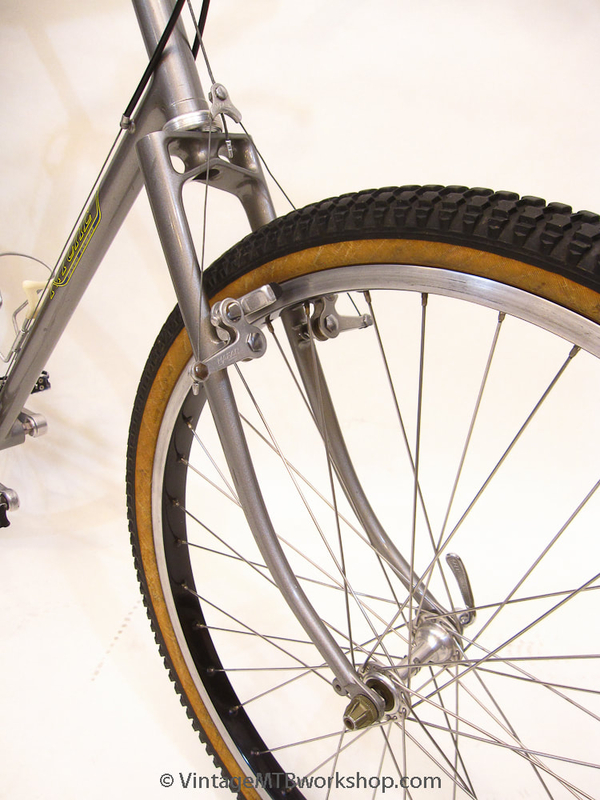
Cycle Pro Snakebelly on a 1980 Ritchey MountainBike
Vintage Mountain Bike Workshop
Tread
Width, size, tread pattern, bead material, sidewall suppleness, air pressure, puncture resistance, and tire materials all come into play making the perfect connection between dirt and bike. In the beginning, the Uniroyal Nobby was grippy enough but over heavy and could use improvement. How to make it lighter?
With mountains of bike parts and plenty of time on our hands, we messed with bikes constantly at 32 Humboldt. Someone was always building a wheel, grinding some parts, or filing or bending or hammering, all to a Bob Marley soundtrack. Since so much of the balloon-tire stuff was interchangeable, we tried all sorts of for-and-wheel-size combinations, such as a 26-inch fork and front wheel on a 24-inch frame, which I broke in half immediately.
One evening Gary [ Fisher ] used an X-ACTO knife to whittle the closely set tread on our only useful tire, the Uniroyal Nobby, into something a little more aggressive. He created an open V-tread pattern with more bite, then weighed the shavings to see how many ounces he had taken off the tire. Fat Tire Flyer, Charlie Kelly, pp. 38-39
The first mountain bike specific tire was the 1981 Specialized Stumpjumper tire, with simple knobby treads.

1981 Specialized Stumpjumper 26 x 2.125“. mombat
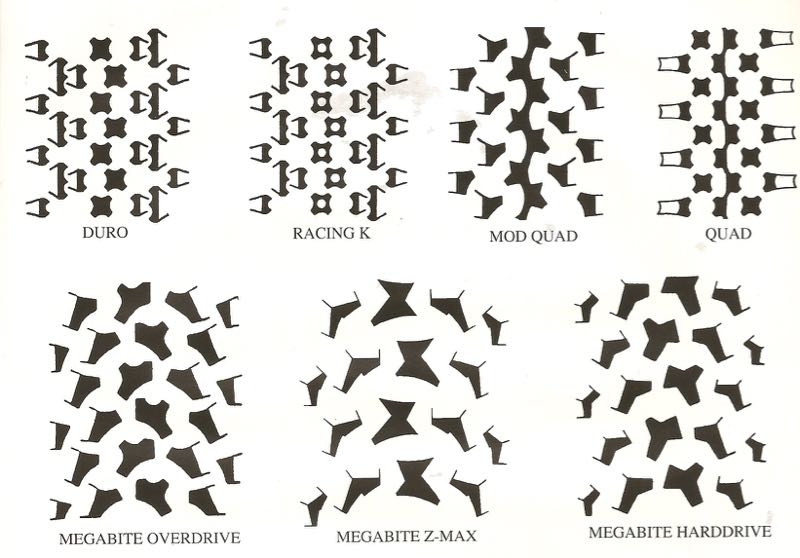
The Ritchey Family of tread patterns from 1983 (Quad) → 1991 (Megabites)5).
bikerumor
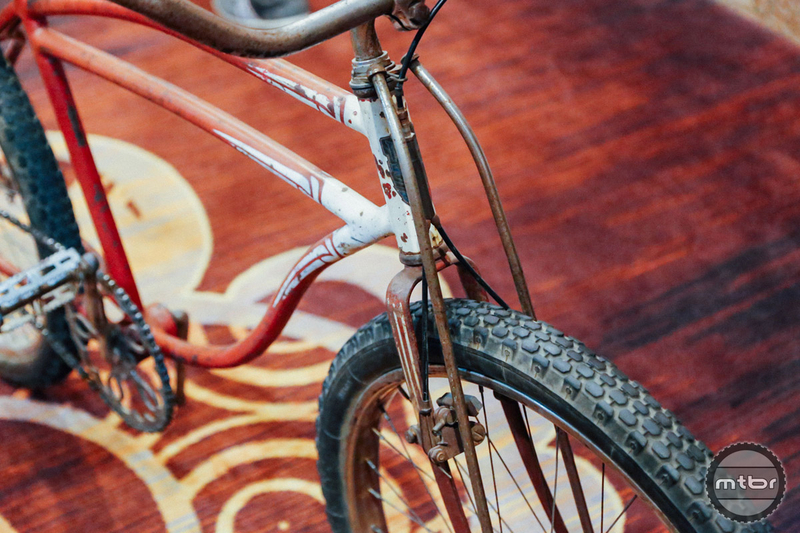
Otis Guy's Repack Racer mtbr
The first folding mountain bike tire with a Kevlar bead is the 1988 Ritchey Force Racing K, 540g, 26×1.9”.
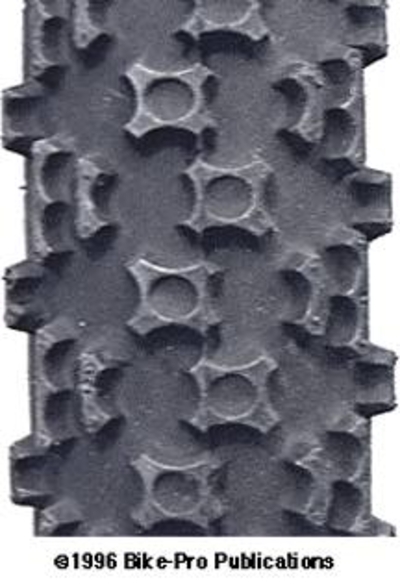
1988 Ritchey Force Racing K, 26 x 1.9“
bikepro
The first directional tire with optimized knobs is the 1991 Ritchey Megabite.
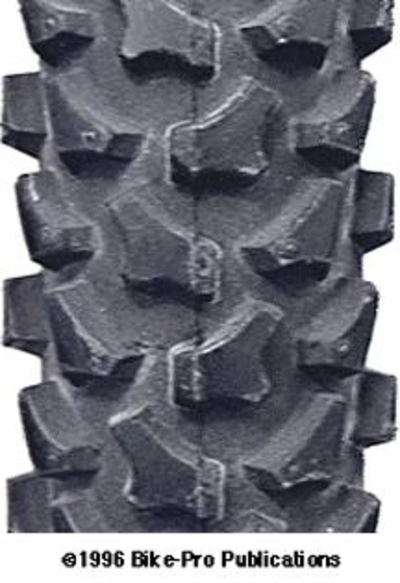
1991 Ritchey Megatbite, 690g, 27 x 2.1”
bikepro
